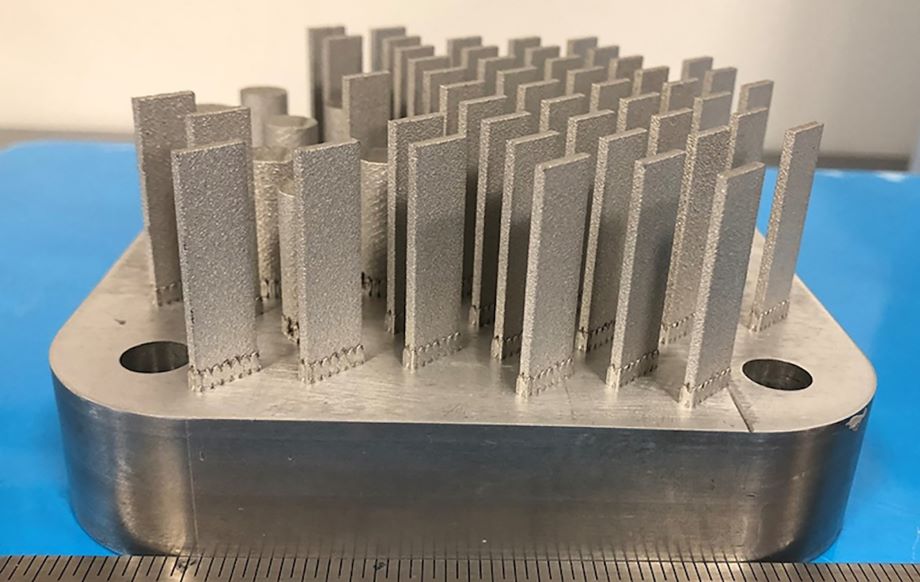Invasive Kudzu Sees New Purpose as Food Packaging
Invasive Kudzu Sees New Purpose as Food Packaging


Could the “vine that ate the South” not be as bad when transformed into biodegradable packaging?
Researchers at Clemson University are looking for ways to make sustainable food packaging from biopolymers, such as cellulose. One project in particular, funded through the 2023 New Innovator in Food & Agriculture Research Award from the Foundation for Food & Agriculture Research, is exploring ways to do so using a plant called kudzu.
Kudzu is sometimes called “the vine that ate the South,” as this invasive plant species produces devastating environmental consequences. This vigorous weed can grow enough to smother out neighboring plants or trees. Vines can also cover nearby structures, utility poles, farm fences, and more. In addition, kudzu can create environmental problems such as shading out native species in forest understories, altering soil chemistry, and decreasing native biodiversity.
Current food packaging still relies on non-biodegradable plastics, which persist in the environment for a long time and can harm wildlife. The Clemson team’s research aims to design and fabricate high-performance packaging materials with sustainable, biodegradable biopolymers derived from renewable sources like food and agriculture waste and byproducts (such as kudzu). Advanced technologies such as computational modeling and artificial intelligence are helping researchers guide the hypothesis-driven, bottom-up—linking molecular structure to material’s overall performance—design and fabrication processes.
Reduced plastics in packaging
“Biopolymer packaging would be biodegradable and could come with benefits that extend beyond keeping food fresh,” said Zhaoxu Meng, an assistant professor of Clemson's School of Mechanical and Automotive Engineering and the project’s principal investigator. “For example, chitosan derived from the shells of shrimp and other crustaceans could add antimicrobial properties to food packaging. The approach holds the promise of packing a double punch for sustainability. It could reduce the amount of plastic that piles up in landfills and pollutes oceans, while taking what would usually be considered waste and making it useful.”
Discover the Benefits of ASME Membership
This project has the potential to impact a diverse range of stakeholders, including researchers, industry professionals, policymakers, local farmers, consumers, and the public, Meng added.
First, it will advance the design and fabrication of biopolymer-based nanocomposites, he continued. The computational modeling and machine learning tools developed through this effort are broadly applicable to other biopolymers and their corresponding nanocomposites. This will facilitate the effective design and processing of these materials for critical applications in the food and agriculture sectors.
Second, the team plans to disseminate the project’s results to industry and government stakeholders through collaborations with Sonoco FRESH at Clemson University and leading organizations such as the Sustainable Packaging Coalition. Sonoco FRESH is a multidisciplinary hub for innovation, addressing global challenges related to the safety, security, and sustainability of food and food packaging. Additionally, Meng and his team will partner with Sonoco, a leading packaging company, to translate research outcomes into practical applications within the industry.
Harvesting biopolymers from unconventional resources
As a third objective, the project is exploring how to harvest biopolymers from unconventional resources—not just the cellulose from kudzu, but also starches from cereals, fruit seeds, tubers, roots, and peanut shells.
You Might Also Enjoy: Plant Burrs Inspire Strong Sutures for Soft Tendons
“This approach can engage local farmers, environmentalists, and policymakers by demonstrating the potential of high-quality biopolymers as sustainable food packaging materials,” Meng said. “By utilizing agricultural waste and byproducts, this project aims to reduce waste and promote sustainability, making it relevant to these stakeholders.”
This research has the potential to engage and inspire consumers to support sustainability initiatives, he added.
“With growing consumer interest in both food safety and the environmental impact of packaging, demonstrating the design and processing of bio-derived polymers will highlight their potential for active food packaging solutions,” Meng said. “By effectively communicating the results to a broader audience, this project is expected to benefit consumers in the long term, encouraging a shift toward more sustainable packaging practices.”
Jim Romeo is a technology writer in Chesapeake, Va.



